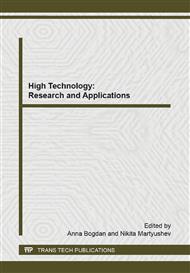p.892
p.898
p.903
p.907
p.912
p.917
p.923
p.928
p.933
Evaluation of the Resource Efficiency of Foundry Technologies: Methodological Aspect
Abstract:
A brief analysis of the approaches to the evaluation of foundry technologies’ resource efficiency is presented. It is revealed that when evaluating resource efficiency researchers apply different criteria which do not allow them, on the one hand, to more objectively estimate the parameters and, on the other hand, to relate and compare the advantages and disadvantages of each of the assessment techniques. Representatives of one of the approaches to resource efficiency evaluation focus on determining the technological side, while representatives of the other approach emphasize the priority of the technological and economic aspects. Taking the example of analysing the problems of the technology of casting by gasified models, it has been demonstrated that the evaluation of resource efficiency cannot be unambiguous. Constant monitoring of the process is required. The authors come to conclusion that it is the method of expert evaluation that allows being more flexible in the evaluation of the resource efficiency of foundry technologies. The result of the conducted methodological assessment is the developed formula for estimating the resource efficiency of foundry technologies.
Info:
Periodical:
Pages:
912-916
Citation:
Online since:
September 2014
Authors:
Price:
Сopyright:
© 2014 Trans Tech Publications Ltd. All Rights Reserved
Share:
Citation:


